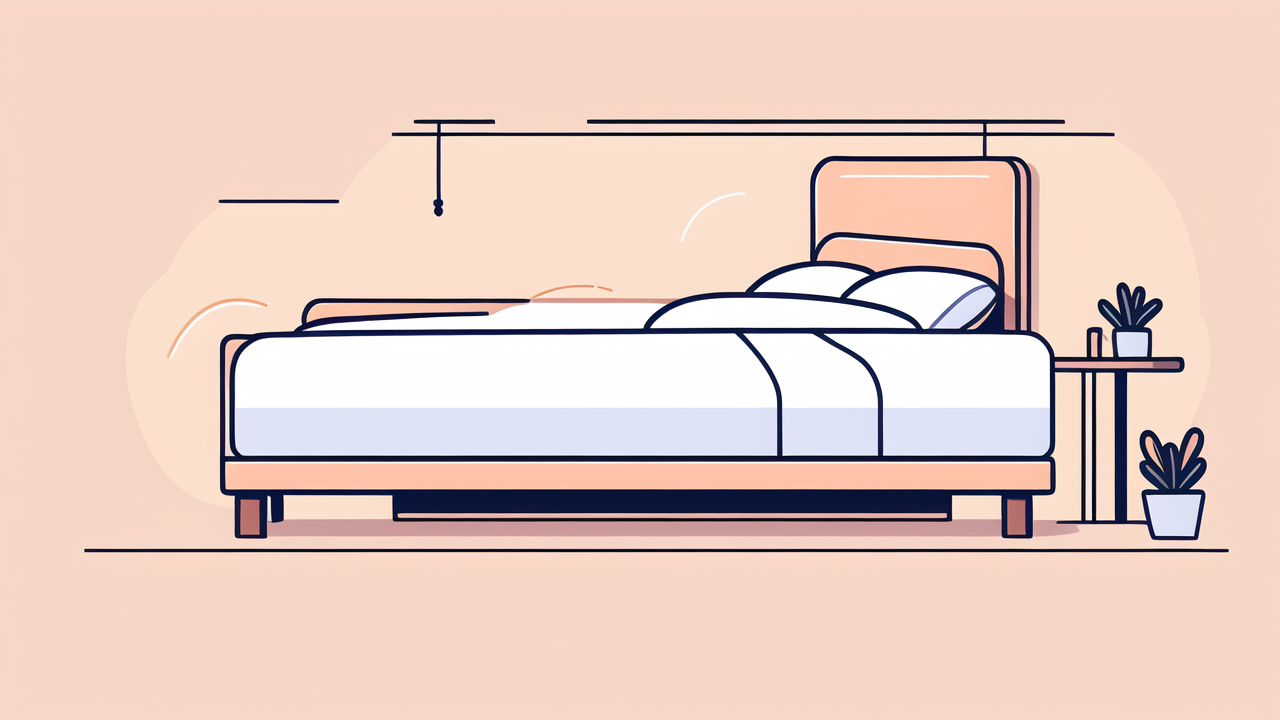The Science of Bed Frames: Materials and Design Influence on Health
Exploring the Role of Materials in Bed Frame Construction
Bed frame materials play a crucial role in sleep quality. Different materials offer unique benefits. Wood provides a warm, natural feel. It's sturdy and can absorb vibrations well. Metal frames are durable and offer excellent support. They're also easy to clean and maintain. Upholstered frames add comfort and style. They can reduce noise and provide a softer edge.

The choice of material affects temperature regulation too. Wood tends to be neutral, while metal can feel cooler. This can impact sleep, especially in different seasons. Some materials may also trigger allergies in sensitive individuals. It's important to consider these factors when choosing a bed frame.
The Ergonomic Aspect of Bed Frame Design
Ergonomics in bed frame design is crucial for good sleep. The height of the bed frame affects how easily you can get in and out. A frame that's too high or low can strain your back. The right height depends on your body size and any mobility issues you may have.
Some bed frames offer adjustable features. These allow you to raise the head or foot of the bed. This can help with conditions like acid reflux or swollen legs. The frame's support system is also key. Slats or a solid base can affect mattress performance. They influence how well your body is supported during sleep.
A well-designed frame distributes weight evenly. This prevents sagging and maintains proper spine alignment. Some frames have built-in lumbar support. These features can significantly improve sleep quality and reduce back pain.
Real-Life Effects: Customer Testimonials on Bed Frame Comfort
Success Stories: When the Right Bed Frame Made All the Difference
Many people have found relief from sleep issues by changing their bed frame. One customer, Sarah, struggled with back pain for years. She switched to a sturdy wooden frame with proper support. Her pain decreased significantly within weeks. She now sleeps through the night without discomfort.

Another user, Mike, had trouble with squeaky metal frames. He chose a solid wood platform bed. The quiet, stable base improved his sleep quality immensely. He no longer wakes up from movement or noise. These stories show how the right bed frame can transform sleep experiences.
Some users report better temperature regulation with certain frames. Lisa switched to a slatted base. She found it allowed better airflow, keeping her cooler at night. This led to more restful sleep, especially during hot summers. These testimonials highlight the real impact of bed frame choices on daily life.
Case Studies: Comparing Different Bed Frame Types
A study compared metal, wood, and upholstered bed frames. Participants used each type for a month. The results were intriguing. Metal frames scored high for support but low on comfort. Wood frames balanced comfort and support well. Upholstered frames rated highest for initial comfort.
However, long-term use showed different results. Some found the soft edges of upholstered frames less supportive over time. Wood frames maintained consistent comfort levels throughout the study. Metal frames improved in comfort as users adjusted to the firmer feel.
Another case study focused on adjustable bed frames. Users with chronic pain reported significant improvements. The ability to change positions easily reduced discomfort. This led to better sleep quality and daytime functioning. These studies provide valuable insights into frame performance.
Choosing Your Bed Frame Wisely: Tips and Best Practices
Navigating Materials and Durability: What to Look For
When selecting a bed frame, durability is key. Look for solid construction and quality materials. Hardwoods like oak or maple offer excellent longevity. For metal frames, check the gauge of the steel. Higher numbers indicate thinner, less durable metal.

Consider the frame's weight capacity. It should easily support you, your mattress, and any sleeping partners. Look for reinforced corners and center support for larger sizes. These prevent sagging and extend the frame's life.
Examine the joints and connections. Welded metal joints are typically stronger than bolted ones. For wooden frames, dovetail or mortise and tenon joints indicate quality craftsmanship. These details ensure your frame will last for years to come.
Maximizing Comfort and Longevity in Your Bed Frame Selection
To maximize comfort, consider your specific needs. If you have back issues, look for frames with adjustable features. These allow you to find the perfect sleeping position. For those who run hot, opt for frames with good airflow. Slatted bases or open designs can help regulate temperature.
Think about noise reduction. Solid platforms or frames with rubber components can minimize squeaks. This is especially important for light sleepers or those with partners. Consider the frame's height in relation to your room and personal preferences. The right height makes getting in and out of bed easier.
Lastly, don't forget aesthetics. Your bed frame is a major part of your bedroom's look. Choose a style that complements your decor. This ensures you'll be happy with your choice for years to come. Remember, a bed frame is an investment in your sleep health and comfort.






